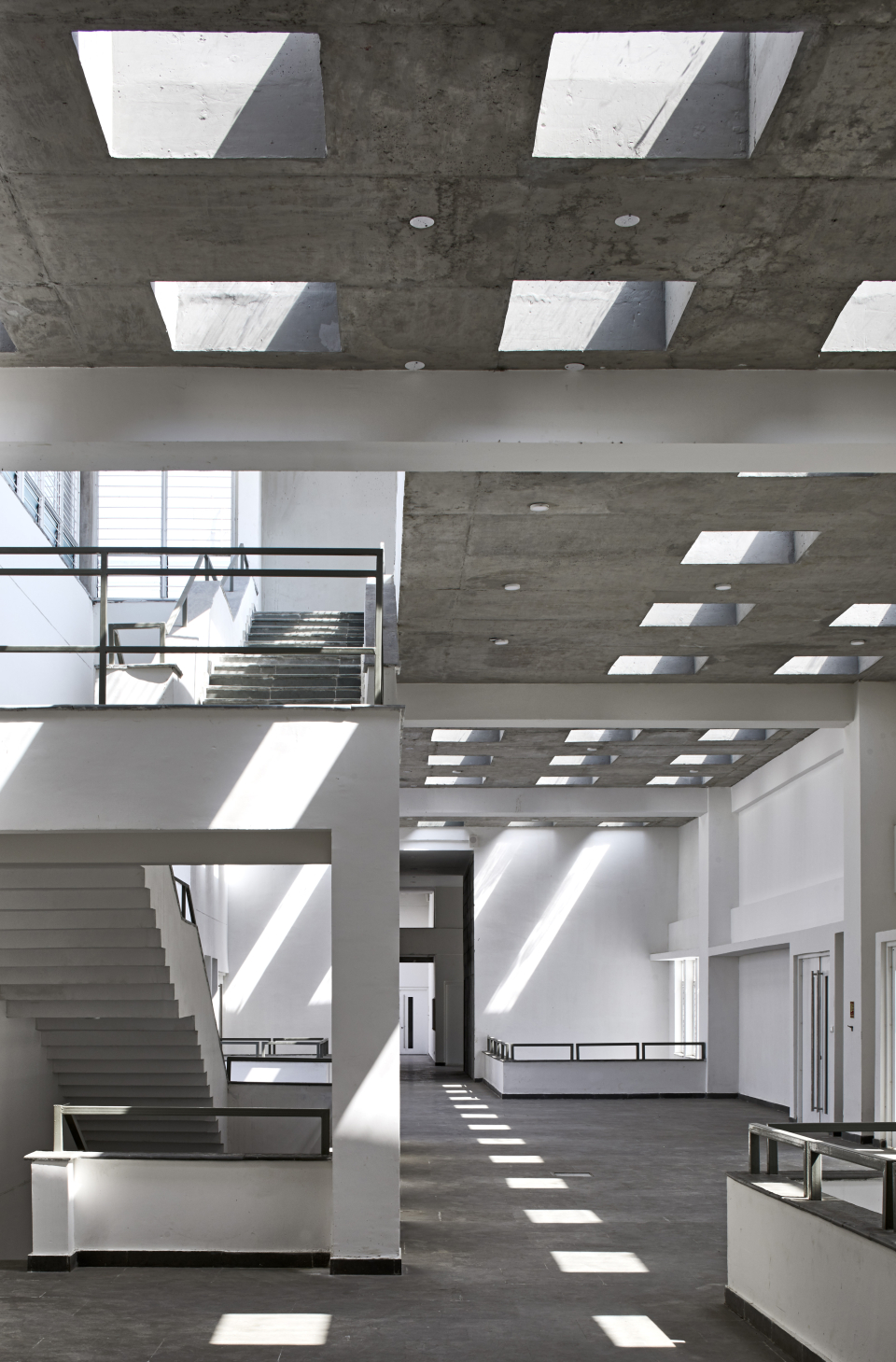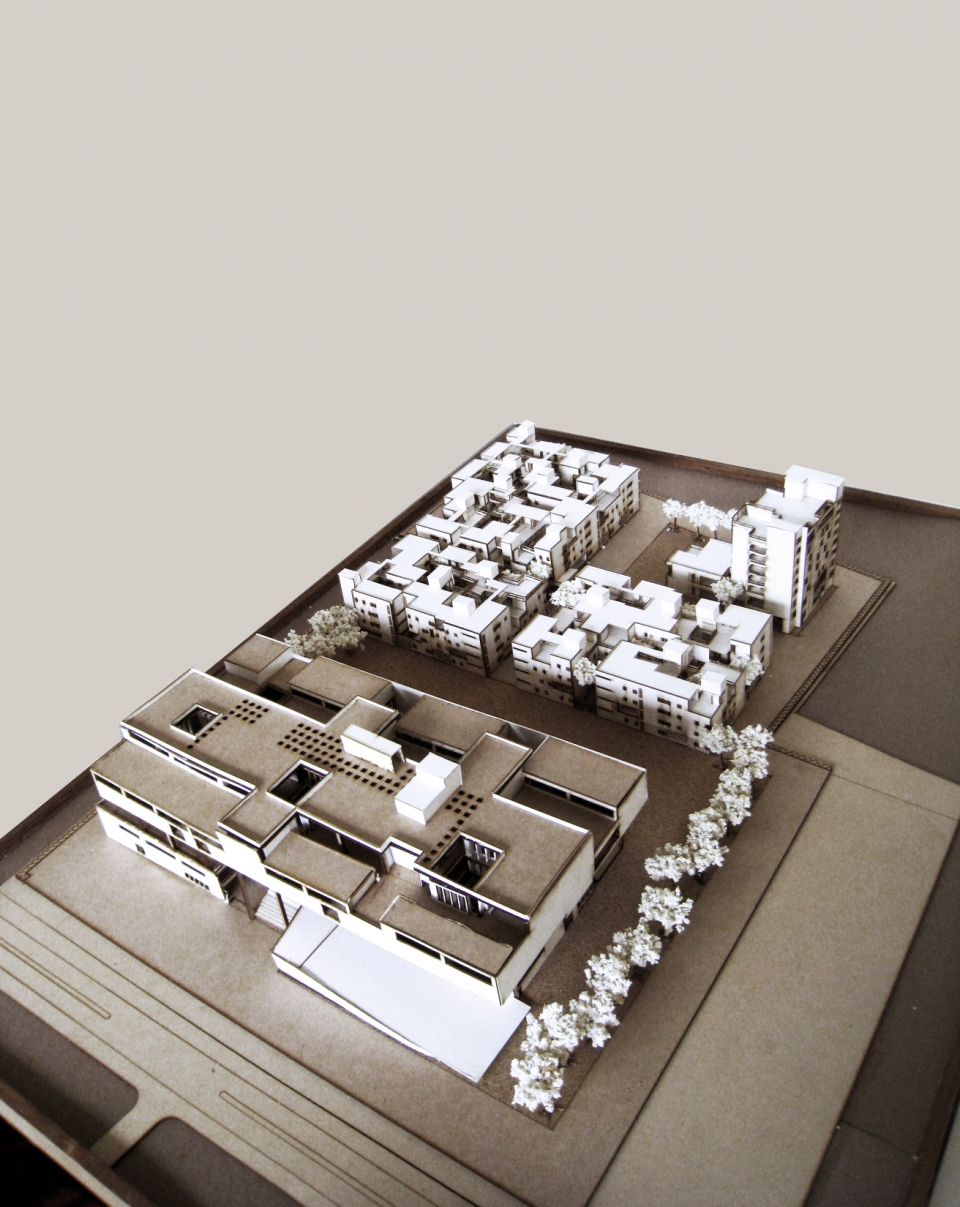The School of Planning and Architecture campus at Vijayawada was a two stage open competition held in 2011-2012. The student housing was completed in June 2017 and the Institution building was inaugurated in August 2018.
The intent was to create social spaces that are embedded within its cultural context along with an environmentally sensitive response to create a built environment which enables learning and living as a community.
The design focuses on the diversity of individuals and the vastness of a community and creates Interdependent programs that offer a multitude of interactive spaces that would be beneficial for a community experience. Our ideas stem from an interest in developing interrelationships in which students would participate in a non-hierarchical nature of the exchange.









